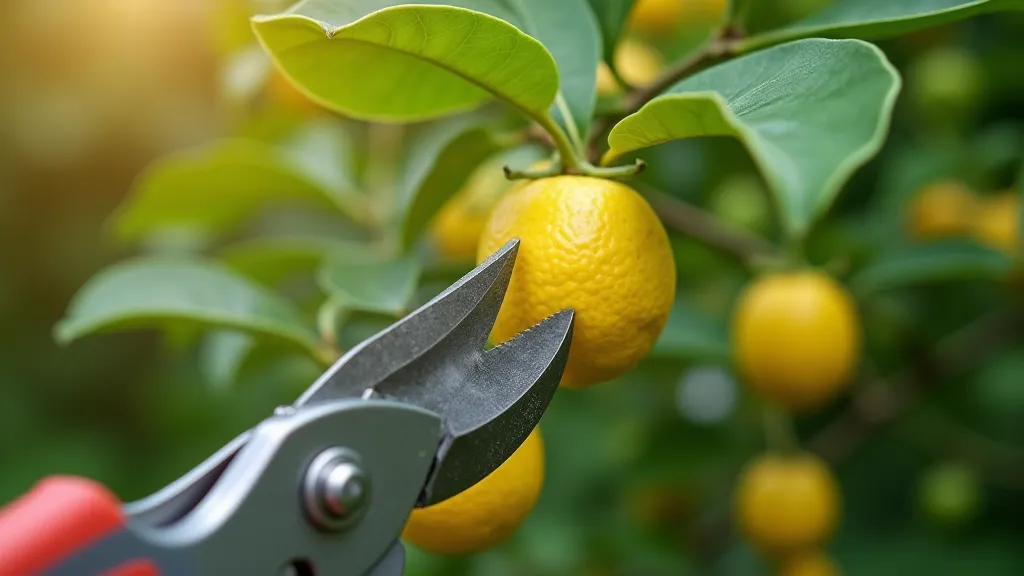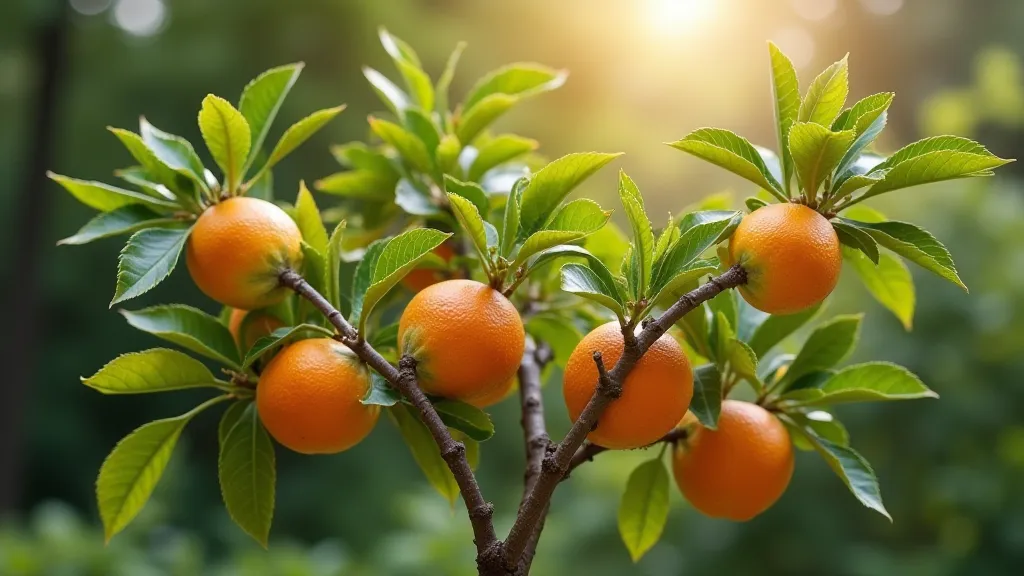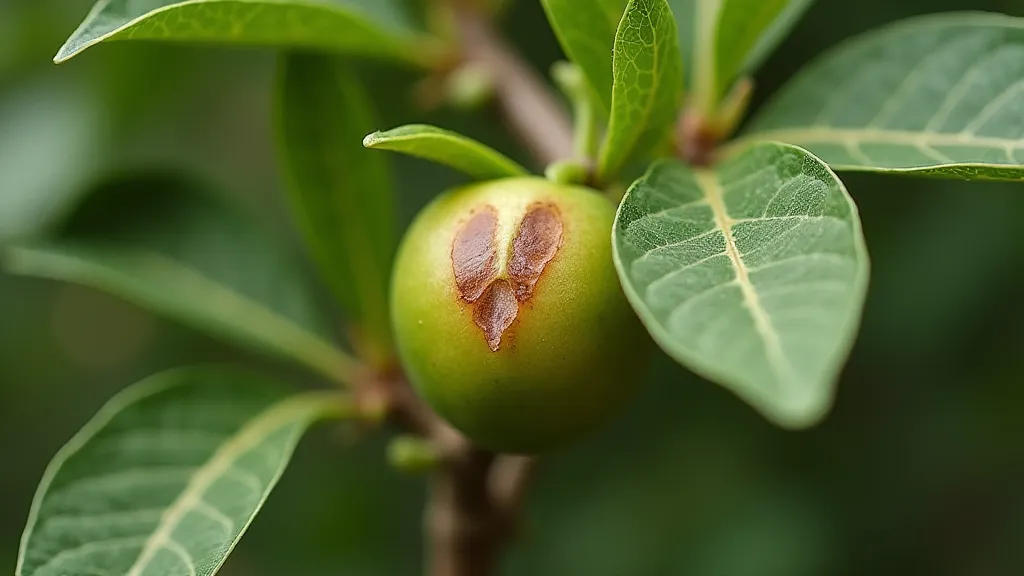Pruning Dwarf Citrus Trees: Shaping & Maintaining Health
Growing dwarf citrus trees indoors is a rewarding experience, offering the beauty of flowering plants and the promise of homegrown fruit. To ensure your trees thrive and produce abundant fruit, proper pruning is essential. This guide provides a step-by-step approach to pruning your dwarf citrus trees, focusing on shaping, size control, and maximizing fruit yield. If you've recently decided to embark on this journey, check out our guide on Dwarf Citrus Trees for Beginners: A Simple Start for a great introduction.
Why Prune Dwarf Citrus Trees?
Pruning isn't just about aesthetics; it's about the health and productivity of your tree. Here's why pruning is crucial:
- Shape and Size Control: Dwarf citrus trees are bred for compactness, but without pruning, they can become unruly and outgrow their indoor space. Pruning helps maintain a manageable size and desired shape.
- Improved Airflow: Dense foliage can lead to fungal diseases. Pruning opens up the canopy, increasing airflow and reducing humidity.
- Light Penetration: Pruning allows more sunlight to reach inner branches and buds, encouraging new growth and fruit production.
- Fruit Yield: Removing old, unproductive wood stimulates new growth that is more likely to produce flowers and fruit.
- Tree Health: Removing diseased or damaged branches prevents the spread of problems to the rest of the tree.

When to Prune Dwarf Citrus Trees
The best time to prune dwarf citrus trees is during their dormant period, typically in late winter or early spring, before new growth begins. This is usually February or March for most climates. Avoid pruning during the active growing season (late spring to early fall) as it can stress the tree and reduce fruit production. Understanding the history and fascinating lore surrounding citrus fruits can deepen your appreciation for these plants; explore that in our article The History & Lore of Citrus Fruits.
Tools You'll Need
Having the right tools makes pruning much easier and safer. Here's what you're likely to need:
- Sharp Pruning Shears: For smaller branches up to about ½ inch in diameter.
- Loppers: For thicker branches that are too large for pruning shears.
- Pruning Saw: For very large branches.
- Gloves: To protect your hands.
Step-by-Step Pruning Guide
- Remove Dead, Damaged, or Diseased Wood: Always start by removing any branches that are dead, damaged by pests or disease, or crossing each other. Cut these back to healthy wood. This is an important first step in maintaining a healthy tree.
- Thinning Cuts: Remove entire branches back to their origin. This encourages airflow and light penetration without stimulating excessive new growth. Focus on branches that are growing towards the center of the tree. This technique opens the tree’s canopy allowing for better circulation and light exposure.
- Pinching: For young trees, pinching back the tips of new growth encourages branching and a bushier shape. This can be done throughout the growing season. This method can also help control the ultimate size of your tree.
- Shaping Cuts: After thinning and removing problem branches, focus on shaping the tree to your desired form. Consider the tree’s natural growth habit and prune to maintain a balanced and aesthetically pleasing shape. Think about what you want the tree to look like when it's fully grown.
- Suckers and Water Sprouts: Remove any suckers (growths from the base of the trunk) and water sprouts (vigorous, upright shoots that grow from the trunk or branches). These draw energy from the tree and don't produce fruit. Recognizing and removing these is essential for maximizing fruit production.

Specific Pruning Considerations for Dwarf Citrus Trees
Choosing the right variety is key for success. If you're still deciding which dwarf citrus to bring home, you might find our guide Choosing the Right Dwarf Citrus: Lemons, Limes, Oranges & More helpful in navigating the diverse options available.
- Young Trees: Focus on establishing a strong branch structure by pinching back new growth and encouraging branching.
- Mature Trees: Maintain the established shape and focus on removing unproductive wood and promoting fruit production.
- Citrus Rootstock: Be mindful of the rootstock if you know it (some dwarf varieties are grafted). Rootstock can sometimes send up shoots that need to be removed. Understanding your tree's rootstock can significantly impact your pruning strategy.
After Pruning Care
After pruning, avoid fertilizing for a few weeks to allow the tree to focus its energy on healing. Monitor the tree for any signs of stress or disease. Protecting your indoor citrus from the cold is another vital aspect of their care. See our tips for Winter Care for Indoor Dwarf Citrus: Protecting from Cold to keep them thriving through the colder months.

Pruning dwarf citrus trees is more than just shaping – it’s about nurturing their health and productivity. By carefully following these guidelines, you’re investing in a thriving, beautiful tree that will reward you with fragrant blossoms and delicious fruit for years to come. Remember that proper variety selection, appropriate pruning techniques, and attentive aftercare are all vital components of success. With a little knowledge and care, your dwarf citrus trees will become a source of joy and a testament to your green thumb!





